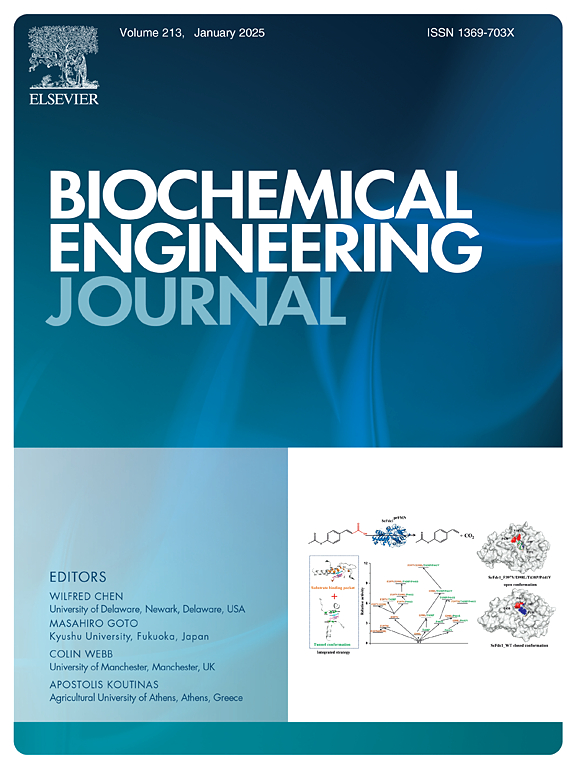Advancements of the Vibrio coralliilyticus eDNA detection based on Co-Fe PBA-assisted biosensors for the rapid coral-disease warning
IF 3.7
3区 生物学
Q2 BIOTECHNOLOGY & APPLIED MICROBIOLOGY
引用次数: 0
Abstract
Vibrio coralliilyticus (V. coralliilyticus) can lead to severe coral diseases and is one of the main causes of coral bleaching. However, there is still a lack of convenient, and non-invasive detection methods for V. coralliilyticus, which brings inconvenience to coral health management. Here, a portable electrochemical biosensor was developed based on environmental DNA (eDNA) and cobalt-iron Prussian Blue Analogue (Co-Fe PBA) electrode material for detecting V. coralliilyticus. Notably, this sensor identified and quantified V. coralliilyticus eDNA in water through specific DNA probes, overcoming the previously reported complex and destructive pretreatment processes. Additionally, thanks to the high specific surface area of Co-Fe PBA, which provided abundant sites for probe anchoring, the constructed portable biosensor exhibited excellent detection performances. Specifically, the detection limit was as low as 19.0 fM, and the linear range was from 100 fM to 100 nM. In subsequent coral infection experiments, the eDNA of V. coralliilyticus increased on the eve of coral bleaching. Based on this change, the occurrence of coral bleaching was successfully predicted. Therefore, this portable biosensor is suitable for dynamic monitoring of V. coralliilyticus, helping to reveal the potential risks to coral health and providing a reference for ecological decision-making for coral reef protection.
基于Co-Fe - pba辅助生物传感器的珊瑚弧菌eDNA检测研究进展
珊瑚弧菌(V. coralliilyticus)可导致严重的珊瑚疾病,是珊瑚白化的主要原因之一。然而,目前仍缺乏方便、无创的珊瑚弧菌检测方法,给珊瑚健康管理带来不便。本文基于环境DNA (eDNA)和钴铁普鲁士蓝类似物(Co-Fe PBA)电极材料,研制了一种便携式珊瑚弧菌电化学生物传感器。值得注意的是,该传感器通过特定的DNA探针识别和量化了水中珊瑚弧菌的eDNA,克服了之前报道的复杂和破坏性的预处理过程。此外,由于Co-Fe PBA具有较高的比表面积,为探针的锚定提供了丰富的位点,所构建的便携式生物传感器具有优异的检测性能。检测限低至19.0 fM,线性范围为100 fM ~ 100 nM。在随后的珊瑚感染实验中,珊瑚弧菌的eDNA在珊瑚白化前夕增加。根据这一变化,成功地预测了珊瑚白化的发生。因此,该便携式生物传感器适用于珊瑚弧菌的动态监测,有助于揭示珊瑚健康的潜在风险,为珊瑚礁保护的生态决策提供参考。
本文章由计算机程序翻译,如有差异,请以英文原文为准。
求助全文
约1分钟内获得全文
求助全文
来源期刊

Biochemical Engineering Journal
工程技术-工程:化工
CiteScore
7.10
自引率
5.10%
发文量
380
审稿时长
34 days
期刊介绍:
The Biochemical Engineering Journal aims to promote progress in the crucial chemical engineering aspects of the development of biological processes associated with everything from raw materials preparation to product recovery relevant to industries as diverse as medical/healthcare, industrial biotechnology, and environmental biotechnology.
The Journal welcomes full length original research papers, short communications, and review papers* in the following research fields:
Biocatalysis (enzyme or microbial) and biotransformations, including immobilized biocatalyst preparation and kinetics
Biosensors and Biodevices including biofabrication and novel fuel cell development
Bioseparations including scale-up and protein refolding/renaturation
Environmental Bioengineering including bioconversion, bioremediation, and microbial fuel cells
Bioreactor Systems including characterization, optimization and scale-up
Bioresources and Biorefinery Engineering including biomass conversion, biofuels, bioenergy, and optimization
Industrial Biotechnology including specialty chemicals, platform chemicals and neutraceuticals
Biomaterials and Tissue Engineering including bioartificial organs, cell encapsulation, and controlled release
Cell Culture Engineering (plant, animal or insect cells) including viral vectors, monoclonal antibodies, recombinant proteins, vaccines, and secondary metabolites
Cell Therapies and Stem Cells including pluripotent, mesenchymal and hematopoietic stem cells; immunotherapies; tissue-specific differentiation; and cryopreservation
Metabolic Engineering, Systems and Synthetic Biology including OMICS, bioinformatics, in silico biology, and metabolic flux analysis
Protein Engineering including enzyme engineering and directed evolution.
 求助内容:
求助内容: 应助结果提醒方式:
应助结果提醒方式:


